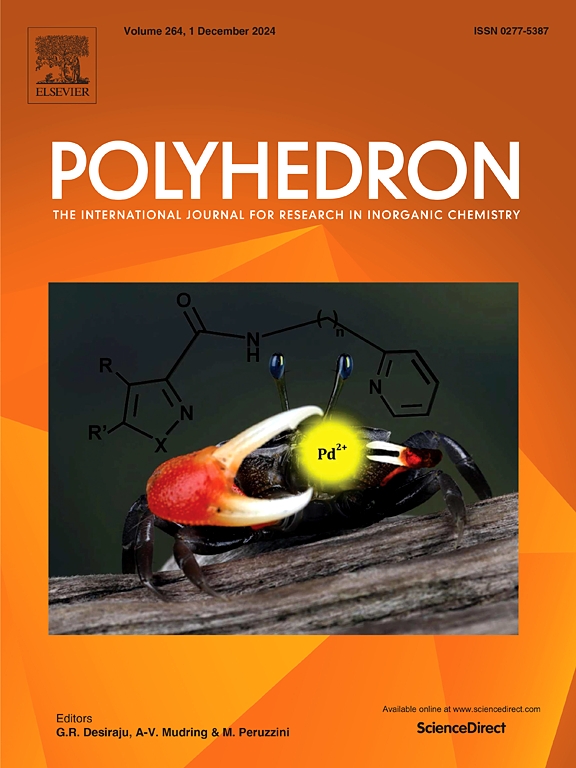Exploring the structural, optical, electronic, and mechanical characteristics of the novel inorganic lead-free double perovskite K2CuSbBr6 for advanced optoelectronic devices
IF 2.4
3区 化学
Q2 CHEMISTRY, INORGANIC & NUCLEAR
引用次数: 0
Abstract
This study investigates the lead-free double perovskite K2CuSbBr6 as a non-toxic alternative to lead-based perovskites for optoelectronic applications. Using DFT calculations in CASTEP, we analyze its structural, electronic, optical, and mechanical properties. The material crystallizes in a cubic Fm-3m phase with a 10.93 Å lattice constant. Its indirect bandgap (0.32 eV, GGA-PBE) has the valence band maximum (VBM) at X and conduction band minimum (CBM) at L, with Cu 3d and Sb 5p states dominating electronic transitions. Optical analysis reveals strong absorption in visible and near-IR regions, peaking at 11.44 eV, a static dielectric constant of 8.31, and a refractive index of 3.22. Mechanical stability is confirmed via Born criteria, with a ductile nature (B/G = 3.42, Poisson’s ratio = 0.36) and anisotropic elastic behavior (Gmax/Gmin = 1.25). These results position K2CuSbBr6 as a stable and efficient material for next-gen optoelectronic devices, particularly solar cells.
探索新型无机无铅双钙钛矿K2CuSbBr6用于先进光电器件的结构、光学、电子和机械特性
本研究研究了无铅双钙钛矿K2CuSbBr6作为光电应用中铅基钙钛矿的无毒替代品。利用CASTEP中的DFT计算,我们分析了其结构、电子、光学和机械性能。该材料结晶为立方的Fm-3m相,晶格常数为10.93 Å。其间接带隙(0.32 eV, GGA-PBE)在X处价带最大(VBM),在L处导带最小(CBM), Cu 3d和Sb 5p态主导电子跃迁。光学分析表明,该材料在可见光和近红外区有很强的吸收,峰值为11.44 eV,静态介电常数为8.31,折射率为3.22。力学稳定性通过Born准则确认,具有延性(B/G = 3.42,泊松比= 0.36)和各向异性弹性行为(Gmax/Gmin = 1.25)。这些结果将K2CuSbBr6定位为下一代光电器件,特别是太阳能电池的稳定高效材料。
本文章由计算机程序翻译,如有差异,请以英文原文为准。
求助全文
约1分钟内获得全文
求助全文
来源期刊

Polyhedron
化学-晶体学
CiteScore
4.90
自引率
7.70%
发文量
515
审稿时长
2 months
期刊介绍:
Polyhedron publishes original, fundamental, experimental and theoretical work of the highest quality in all the major areas of inorganic chemistry. This includes synthetic chemistry, coordination chemistry, organometallic chemistry, bioinorganic chemistry, and solid-state and materials chemistry.
Papers should be significant pieces of work, and all new compounds must be appropriately characterized. The inclusion of single-crystal X-ray structural data is strongly encouraged, but papers reporting only the X-ray structure determination of a single compound will usually not be considered. Papers on solid-state or materials chemistry will be expected to have a significant molecular chemistry component (such as the synthesis and characterization of the molecular precursors and/or a systematic study of the use of different precursors or reaction conditions) or demonstrate a cutting-edge application (for example inorganic materials for energy applications). Papers dealing only with stability constants are not considered.
 求助内容:
求助内容: 应助结果提醒方式:
应助结果提醒方式:


